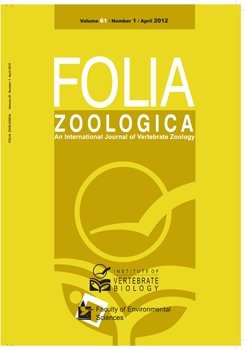Diet composition of the golden jackal (Canis aureus, L.) in Bulgaria, where the largest jackal population in Europe occurs, has been studied by scat analysis in a typical and newly occupied agricultural environment. The study was carried out during late summer and early autumn, a period when small mammal density is high. The food of the jackal typically consisted of small-sized and wild-living prey species. Rodents have been found to represent the primary food of the jackal (biomass estimation: 59.3 %, mainly Microtus spp.), and the European brown hare (Lepus europaeus, 20.1 %) and plants (19.7 %, mainly fruits) are secondary foods. Other prey, such as birds (mainly passerines), reptiles and invertebrates had been consumed in a low biomass ratio. No remains of wild ungulate and domestic animals have been detected in the studied scats.
How to translate text using browser tools
1 April 2012
Diet composition of the golden jackal, Canis aureus in an agricultural environment
Georgi Markov,
József Lanszki

Folia Zoologica
Vol. 61 • No. 1
April 2012
Vol. 61 • No. 1
April 2012
Bulgaria
Feeding habits
prey
rodent
scat analysis




